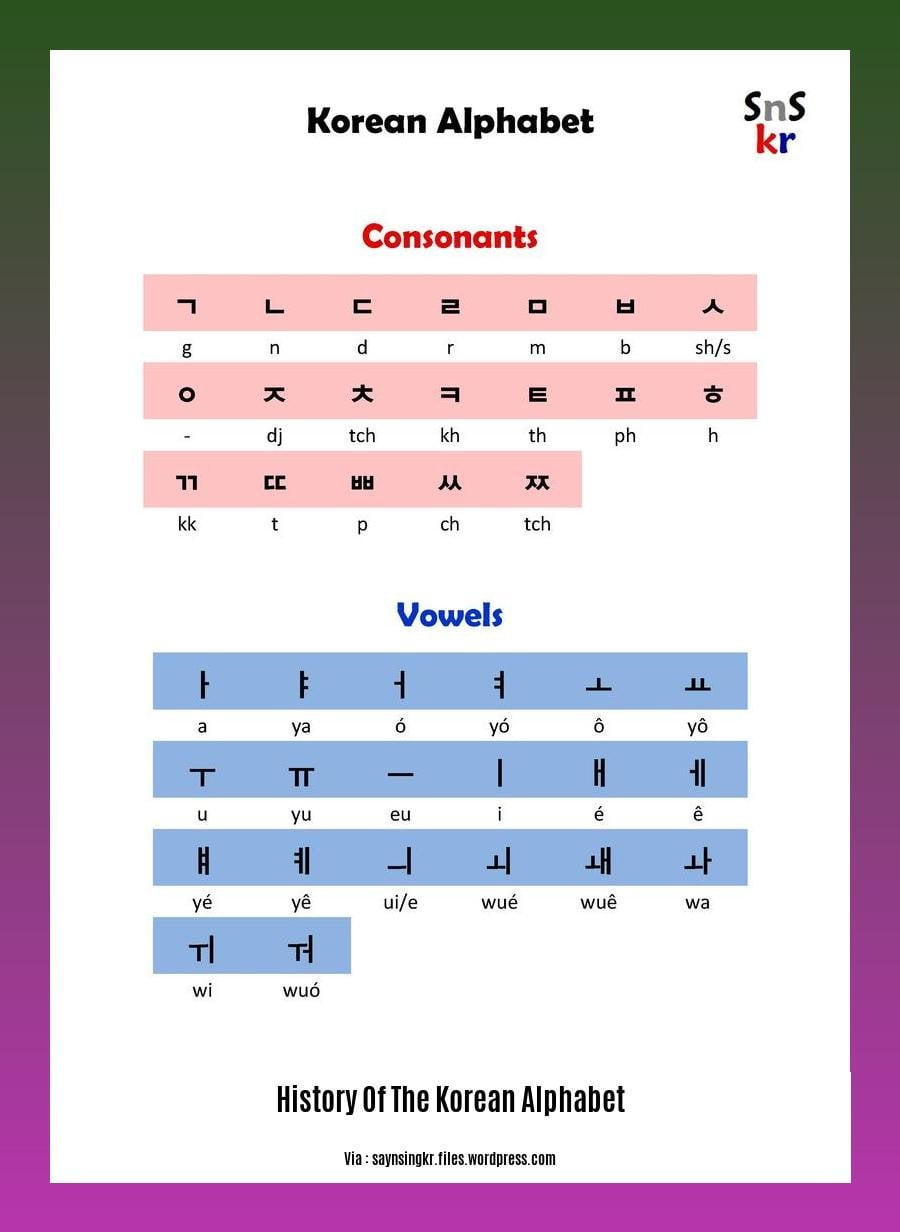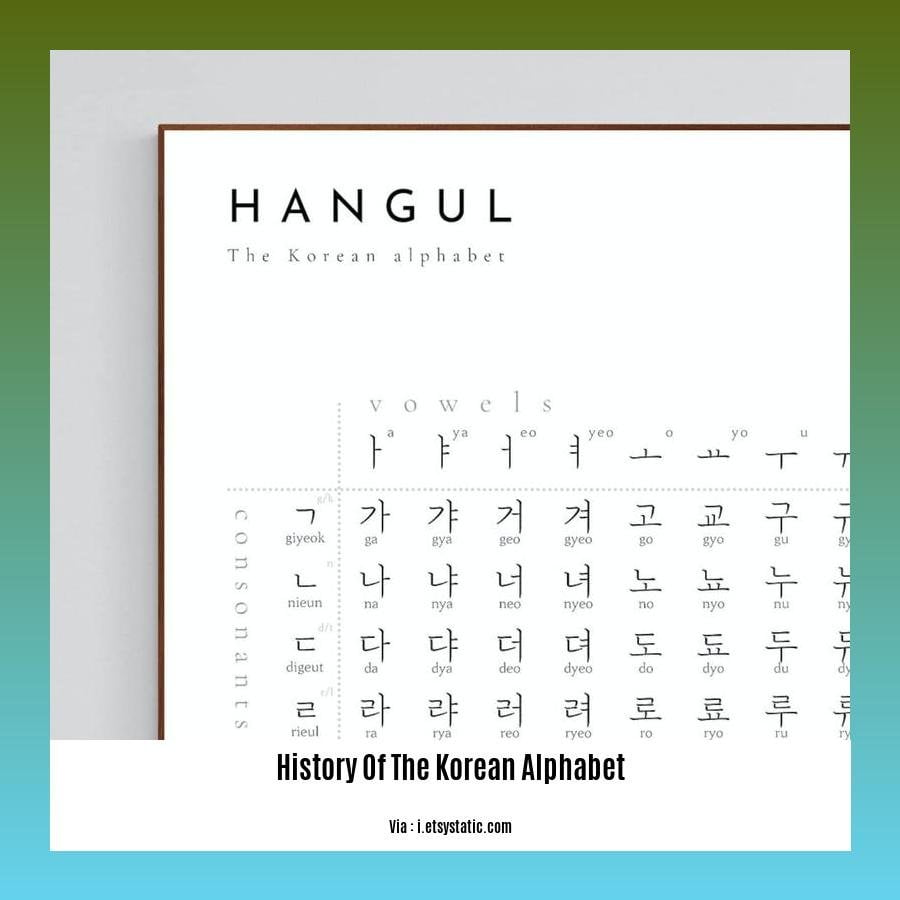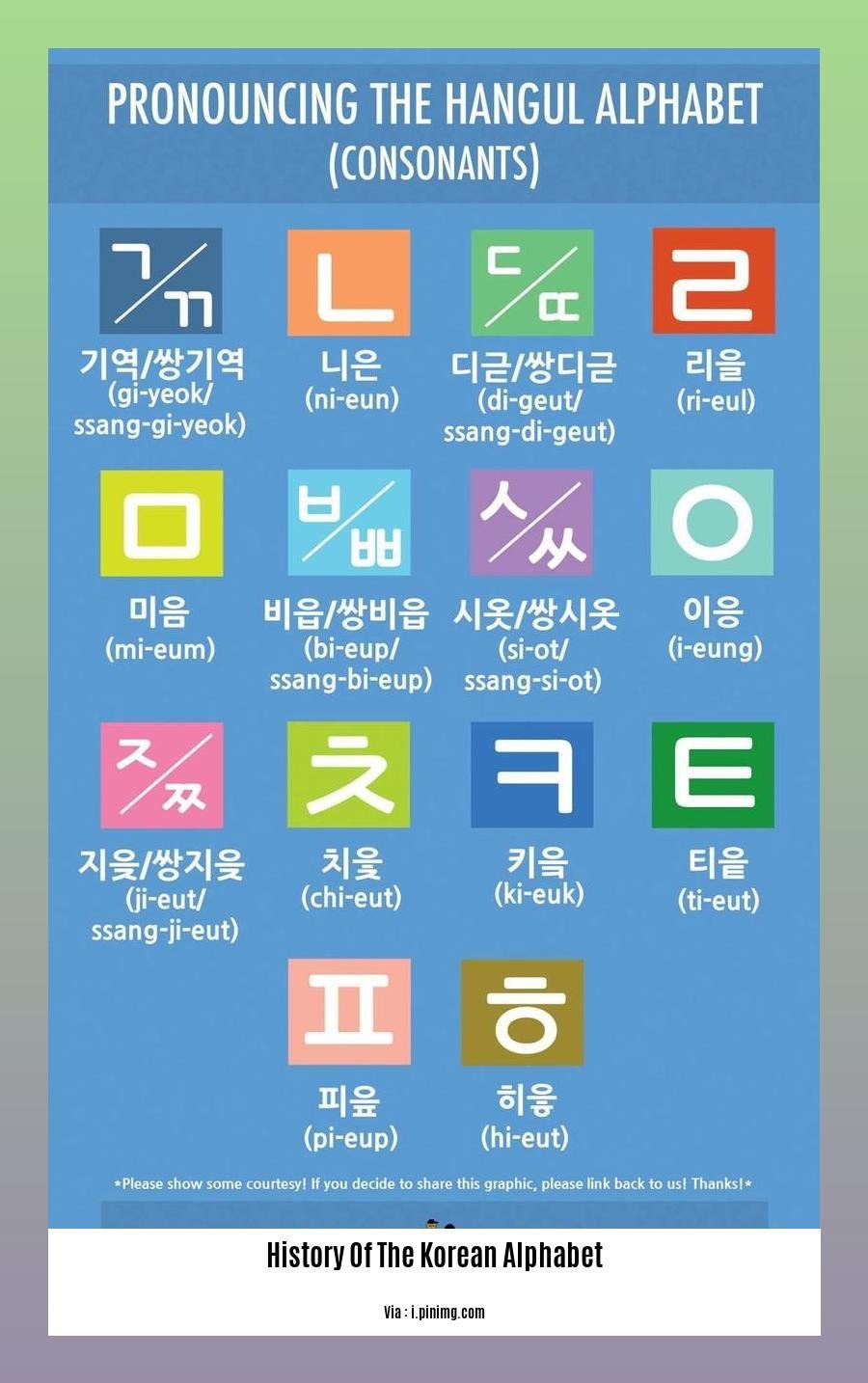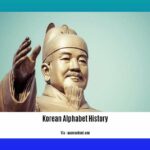Embark on a captivating journey through time as we unveil the rich history of the Korean alphabet, Hangeul, in [- A Journey Through Time: Unveiling the History of the Korean Alphabet]. Discover the fascinating origins and development of this unique writing system, exploring its profound impact on Korean culture and identity. Delve into the intriguing story behind its creation and witness how Hangeul has become a symbol of national pride and innovation.
Key Takeaways:
- King Sejong the Great created Hangeul in 1443.
- Hangeul was originally called Hunminjeong’eum.
- Hangeul was renamed by Korean linguist Ju Si-gyeong in 1912.
- King Sejong developed Hangeul to improve literacy.
- Hangeul is a featural alphabet written in morpho-syllabic blocks.
- Hangeul has 24 basic letters: 14 consonants and 10 vowels.
- Hangeul was designed to reflect the sounds of spoken Korean.
- Hangeul is easy to learn and use.
History of the Korean Alphabet

The history of the Korean alphabet is a fascinating story of innovation and cultural identity. King Sejong the Great, a revered figure in Korean history, recognized that the Chinese writing system was challenging for his people to master. Determined to create a more accessible and efficient script, he tasked a group of scholars with developing a new writing system specifically for the Korean language.
In 1443, this team of scholars presented King Sejong with a revolutionary creation: Hunminjeongeum, later renamed Hangeul by Korean linguist Ju Si-gyeong in 1912. This new alphabet, meticulously crafted to reflect the sounds of the Korean language, marked a significant turning point in Korean history.
Unique Features of Hangeul
Hangeul embodies King Sejong’s vision of an intuitive and easy-to-learn writing system. Here are some of its unique features that set it apart from other alphabets:
Simplicity: Hangeul is a featural alphabet, meaning it represents the basic sounds of the Korean language rather than whole words or syllables. This makes it easier to learn and use, especially for those with limited literacy.
Morpho-Syllabic Blocks: Hangeul characters are arranged in blocks that represent both consonants and vowels, creating a syllabic writing system. This allows for efficient and accurate expression of the Korean language’s rich sound system.
Logical Arrangement: The arrangement of consonants and vowels within the Hangeul alphabet is based on the points of articulation and the shape of the mouth when producing the sounds. This logical organization makes it easier for learners to remember and apply the alphabet.
Impact on Korean Culture
Hangeul’s creation had a profound impact on Korean culture and identity. It facilitated widespread literacy, empowering ordinary people to read and write, fostering a more inclusive and informed society. The alphabet also played a crucial role in the development of Korean literature, leading to a flourishing of creative expression and storytelling.
Today, Hangeul stands as a symbol of Korean national pride and a testament to King Sejong’s forward-thinking vision. It is a living legacy that continues to shape the way Koreans communicate and connect with their rich cultural heritage.
Are you curious about how the golf cart revolutionized the sport of golf? Click to discover its fascinating journey from humble beginnings to becoming an essential tool for players worldwide!
Ever wondered about the evolution of the seemingly simple picture frame? Delve into the captivating history behind these ubiquitous objects that have preserved and showcased our cherished memories for centuries.
Indulge your sweet tooth and uncover the history of the Snickers candy bar, a confectionery delight that has tantalized taste buds for over a century. Learn about its humble origins, innovative marketing strategies, and the secrets behind its enduring popularity.
Role of King Sejong in its Creation
To comprehend the extraordinary feat of Hangeul’s creation, we must turn the pages of history and meet the visionary behind it all: King Sejong the Great. As the fourth ruler of the Joseon dynasty in Korea, his reign ushered in an era of progress and enlightenment. King Sejong recognized the limitations of the existing writing system, which hindered the spread of literacy and perpetuated social divisions.
Influenced by his Confucian ideals and a deep desire to empower his people, King Sejong embarked on a bold mission to create a more accessible and efficient writing system. He assembled a team of brilliant scholars, including the renowned linguist Choe Hang, and tasked them with developing a script tailored to the unique sounds of the Korean language.
After years of meticulous research and experimentation, they presented their masterpiece: Hunminjeongeum, which later became known as Hangeul. This revolutionary alphabet, consisting of 28 letters, marked a turning point in Korean history. Its logical arrangement and phonetic representation made it accessible to people from all walks of life, fostering widespread literacy and promoting social equality.
King Sejong’s vision and determination were instrumental in the creation of Hangeul.
His unwavering belief in the power of education and his deep love for his people drove him to pursue this ambitious project. Hangeul’s enduring legacy as a symbol of Korean identity and cultural pride stands as a testament to King Sejong’s extraordinary leadership and foresight.
Key Takeaways:
- King Sejong recognized the need for a more accessible writing system to promote literacy and cultural distinctiveness.
- He assembled a team of scholars, including Choe Hang, to develop Hangeul, a phonetic writing system tailored to the Korean language.
- The creation of Hangeul facilitated widespread literacy, empowering ordinary Koreans to read and write.
- Hangeul’s logical arrangement and phonetic representation made it accessible to people from all walks of life, fostering social equality.
- King Sejong’s vision and determination were instrumental in the creation of Hangeul, cementing his legacy as a visionary leader and cultural icon.
Citations:
- King Sejong the Great of Korea, Scholar and Leader:
- Sejong the Great – World History Encyclopedia: https://www.worldhistory.org/Sejong_the_Great/
Impact on Korean Culture and Identity

Hangeul (한글), born from the innovative mind of King Sejong the Great, has had a profound and multifaceted impact on Korean culture and identity. This ingenious alphabet, crafted to mirror the intricacies of the Korean language, has shaped the nation’s history, empowering its people and leaving an indelible mark on their collective identity. Let’s delve into the remarkable story of Hangeul and explore its enduring legacy.
A Revolution in Communication:
- Hangeul transformed communication in Korea, replacing the complex Chinese characters with a simple, phonetic system that mirrored the sounds of Korean speech.
- This revolutionary script, designed to increase literacy rates and foster wider access to education, democratized knowledge and empowered ordinary Koreans to express themselves in their native tongue.
- The ease of learning Hangeul accelerated the spread of literacy, leading to a surge in the production and consumption of Korean literature, poetry, and scholarly works.
A Symbol of National Pride:
- Hangeul emerged as a potent symbol of Korean national identity, embodying the nation’s unique cultural heritage and its distinct linguistic identity.
- The development of Hangeul reflected King Sejong’s deep love for his people and his determination to create a writing system that would promote cultural independence and foster a sense of national unity.
- The Korean alphabet stood as a testament to the ingenuity and creativity of the Korean people, a source of immense pride and a symbol of their resilience in the face of foreign influence.
A Catalyst for Cultural Expression:
- Hangeul’s simplicity and efficiency allowed for a flourishing of Korean literature, enabling writers to express their thoughts and emotions with greater precision and depth.
- The rise of vernacular literature, written in Hangeul, gave voice to the experiences and perspectives of ordinary Koreans, expanding the literary landscape and enriching the nation’s cultural heritage.
- Hangeul played a pivotal role in the development of Korean popular culture, facilitating the creation of modern Korean music, film, and television, which have gained international recognition and acclaim.
Key Takeaways:
- Hangeul’s creation facilitated widespread literacy, empowering Koreans to read and write in their native tongue.
- The Korean alphabet played a pivotal role in the development of Korean literature, leading to a flourishing of creative expression.
- Hangeul emerged as a potent symbol of Korean national identity, embodying the nation’s unique cultural heritage and its distinct linguistic identity.
- The Korean alphabet stands as a testament to the ingenuity and creativity of the Korean people, a source of immense pride and a symbol of their resilience in the face of foreign influence.
References:
- The History of Hangul, the Korean Alphabet
- King Sejong the Great and the Creation of Hangul
Legacy and Enduring Significance: Exploring the Profound Impact of Hangul on Korean Culture and Identity
Hangul, the unique and ingenious writing system of Korea, stands as a testament to the enduring power of language and its profound impact on a nation’s identity. Take a journey with us as we delve into the legacy and enduring significance of this remarkable feat of human ingenuity.
Key Takeaways:
🎯 A Revolutionary Script: Hangul’s creation in 1446 marked a revolutionary shift in Korean history, replacing the complex Hanja characters with a simple and accessible script designed to reflect the unique sounds of the Korean language.
🗣️ Champion of Literacy: By making writing accessible to the masses, Hangul transformed Korea into one of the most literate societies of its time, fostering a surge in cultural expression and educational opportunities.
📚 A Cultural Catalyst: Hangul’s simplicity sparked a literary renaissance, leading to the flourishing of Korean literature, poetry, and prose, which beautifully captured the essence of the Korean soul.
🇰🇷 National Pride and Symbol of Identity: Hangul became an integral part of the Korean identity, representing centuries of cultural heritage and national pride. Its unique design and structure distinguish Korea from its neighbors, forging a sense of unity and uniqueness.
🌐 A Global Language: Hangul’s influence extends beyond Korea’s borders, with Korean language and culture gaining global recognition and popularity. Hangul serves as a bridge connecting Korea to the world, promoting understanding and cultural exchange.
The Enduring Legacy of Hangul
Hangul’s legacy is deeply intertwined with the history and culture of Korea. Its creation was a pivotal moment that shaped the nation’s educational landscape, empowering ordinary Koreans to read, write, and express themselves. This newfound literacy ignited a passion for knowledge and elevated Korea to one of the most literate societies in the world.
Hangul’s impact on Korean literature is immeasurable. It enabled the creation of literary masterpieces that captured the essence of Korean culture, identity, and emotions. The simplicity of Hangul allowed writers to craft works that resonated with the masses, democratizing literature and making it accessible to all.
Beyond its literary significance, Hangul played a crucial role in preserving Korea’s unique cultural heritage. Oral traditions and folklore could now be documented and passed down through generations, ensuring the survival of Korea’s rich intangible cultural assets.
Conclusion: Hangul’s Lasting Influence
Hangul’s enduring significance lies in its ability to encapsulate the identity, heritage, and aspirations of the Korean people. It has not only shaped Korea’s past but continues to influence its present and future. Hangul stands as a symbol of innovation, progress, and the enduring power of language to transform and inspire.
References
What to Do in Korea: A Brief History of Hangul (한글)
History of the Korean Language
FAQ
Q1: When was the Korean alphabet created and who created it?
A1: The Korean alphabet, originally called Hunminjeong’eum, was created in 1443 by King Sejong the Great, the fourth ruler of the Joseon dynasty.
Q2: Why did King Sejong create the Korean alphabet?
A2: King Sejong developed Hangeul to make reading and writing accessible to people with limited education, promoting literacy and cultural distinctiveness among Koreans.
Q3: What are the unique features of the Korean alphabet?
A3: Hangeul is a featural alphabet written in morpho-syllabic blocks, designed for both Korean and Chinese languages. It consists of 24 basic letters: 14 consonant letters and 10 vowel letters, reflecting the sounds of the spoken Korean language.
Q4: How did the Korean alphabet impact Korean culture and identity?
A4: Hangeul’s creation symbolized cultural pride and innovation, contributing to the development of Korean identity and cultural distinctiveness. It facilitated the spread of literacy and made it easier for people to learn and use the Korean language.
Q5: Is Hangeul still used in Korea today?
A5: Yes, Hangeul is still the official writing system used in Korea today, serving as a source of national pride and a testament to King Sejong’s legacy.
- Prevent Free Surface Effect: Ship Stability Guide - April 15, 2025
- Soccer Team Size: Official Rules & Player Counts (2025) - April 15, 2025
- Red Cloud, NE: Discover Willa Cather’s Legacy - April 11, 2025





![[HISTORY OF WHOO SINGAPORE] Unveiling the Secrets of Ancient Korean Court Beauty Rituals history-of-whoo-singapore_2](https://www.lolaapp.com/wp-content/uploads/2023/12/history-of-whoo-singapore_2-150x150.jpg)










